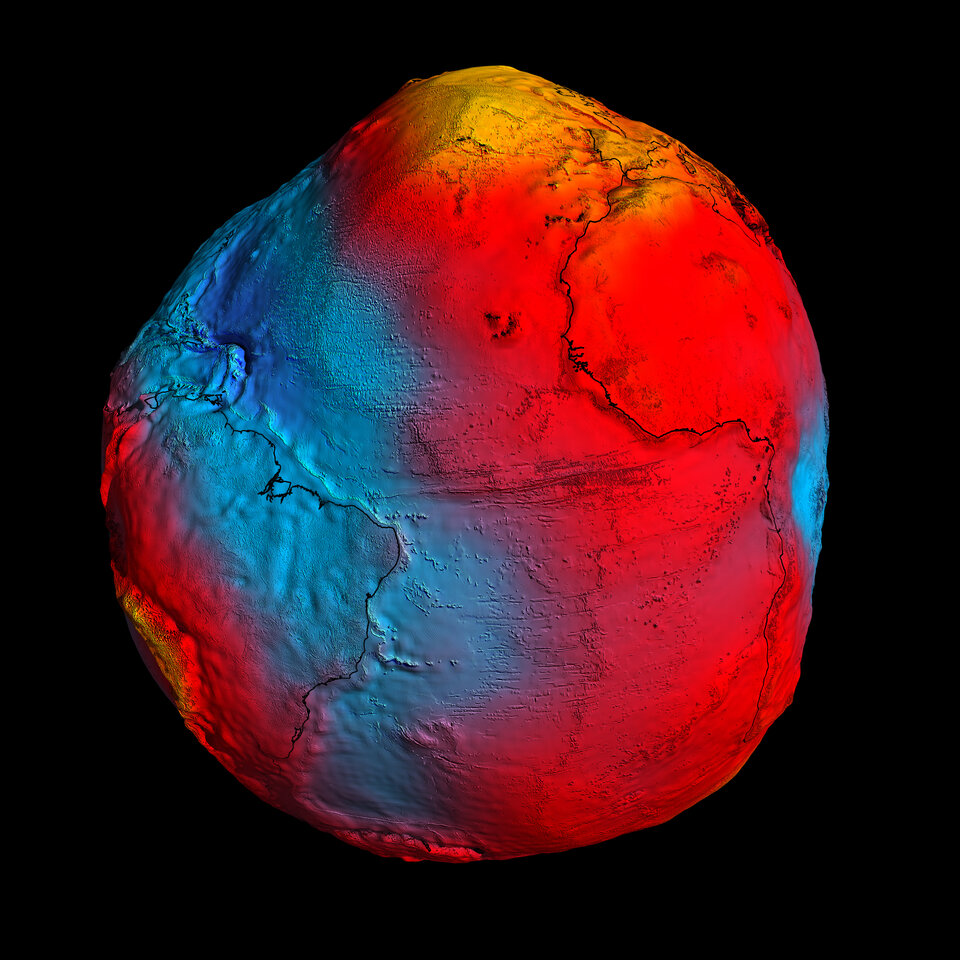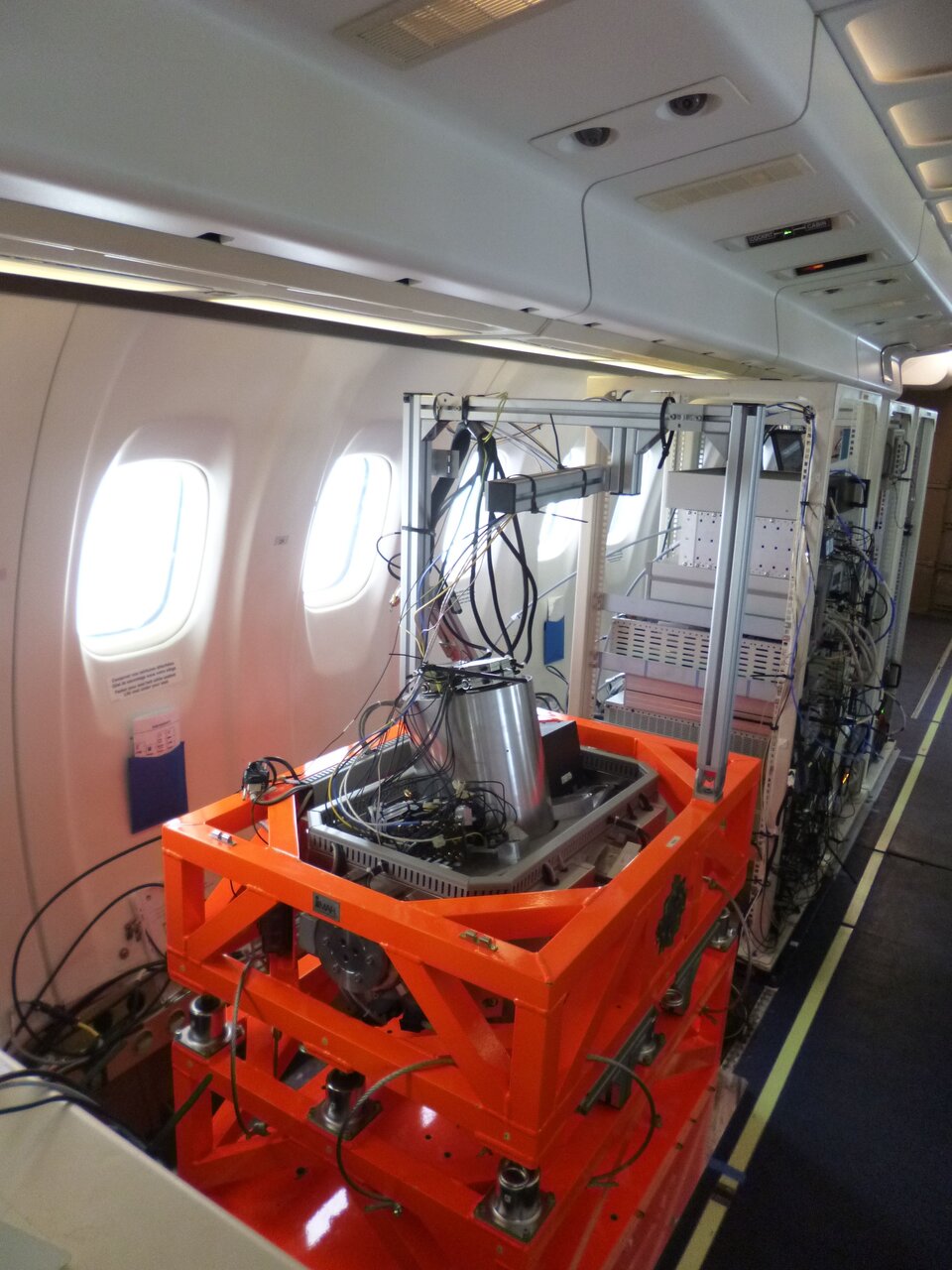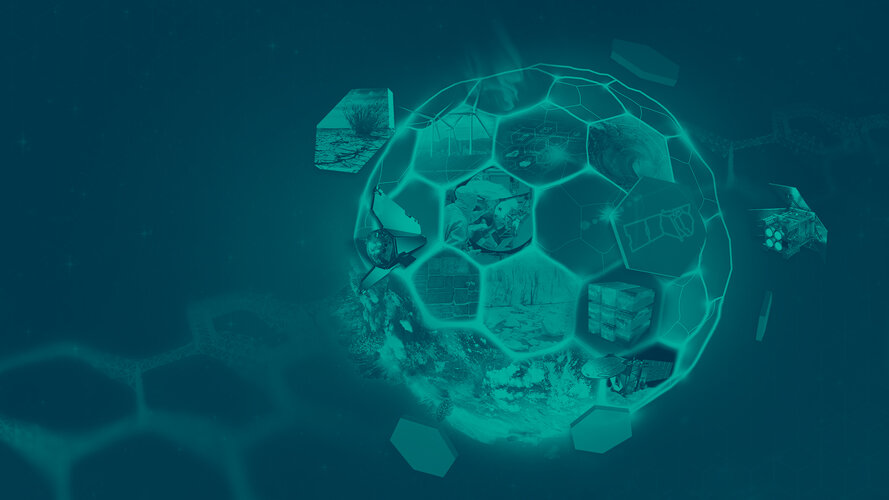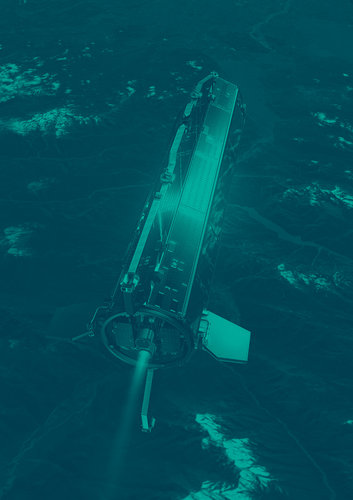Taking climate monitoring into the future with quantum
Over the last decades, satellites measuring the many aspects of Earth have certainly demonstrated their worth with the information they yield to understand and monitor our environment and, importantly, to provide undeniable evidence of climate change for policymaking. While Europe is currently firmly placed as a world leader in Earth observation, it’s critical to stay ahead of the game by examining how even more sophisticated space technologies can be developed to return even more precise information in the future.
Today, at ESA’s Living Planet Symposium, being held in Bonn, scientists dug deep into the potential of spaceborne quantum gravity sensors to do just this.
Most of us probably wouldn’t normally associate Earth’s gravity field with climate – we would think of it as the fundamental force of nature that keeps our planet in orbit around the Sun and what holds our world together. However, the strength of our gravity field varies from place to place, and some of these tiny variations are actually linked to aspects of our planet that are connected to climate change.
Variations in the gravity field are due to a number of factors such as the rotation of Earth, the position of mountains and ocean trenches and variations in the density of Earth's interior. But smaller variations in time and location are due to other factors such as fluctuations in underground water reservoirs and changes in ice mass.
So having a really precise model of the gravity field and being able to show change over time is important for understanding issues such as the dwindling freshwater resources, the loss of ice mass from ice sheets and glaciers and sea-level change, which are symptomatic of the climate crisis.
Between 2009 and 2013, ESA’s GOCE satellite mission mapped the gravity field in detail. This resulted in a unique model of the geoid, which is the surface of equal gravitational potential defined by the gravity field. The model has been the foundation of many published research papers on the complexities of Earth’s interior. But the GOCE geoid has also been key in accessing sea-level change and ocean circulation patterns, for example.

In 2002, the US–German GRACE tandem satellite mission was launched to measure the local pull of gravity as water shifts around Earth owing to changing seasons, weather and climate processes.
It was also used to monitor the loss of ice mass from the ice sheets and offered insights into groundwater resources. In 2018, the GRACE Follow-On mission was launched to extend these measurements.
These three missions have undoubtedly revolutionised our understanding of the gravity field and dynamic processes related to mass transport and their coupling mechanisms.
Turning back to the biggest environmental challenge society is facing – climate change - all signs are that the climate crisis is worsening, and even if we manage to achieve the goal of limiting global temperature rise to 1.5°C, the detrimental effects from it will be long lasting.
Satellites in orbit today and those planned for the future are critical to providing global data to understand how Earth works and how it is been affected by climate change, and to assess if climate policies are being effective.
With so much at stake, it is equally critical to develop completely new space technologies for further down the line – for satellite missions that could be launched within the next decade.
Emerging cold atom technologies that exploit the wave nature of matter are showing real potential for improving the way measurements are made from space – particularly for measuring gravity, which was the subject of in-depth sessions today at ESA’s Living Planet Symposium.

Moreover, exploiting the ‘quantum revolution’ with quantum missions for climate is one of the key components of ESA’s Accelerator: Space for a Green Future, which pushes for advanced data, science, technology, applications and services for a sustainable life on Earth.
The Accelerator will provide European decision-makers, industry and society with the support they need to help achieve carbon neutrality by 2050.
The idea is that future quantum sensors would combine the principles of current gravimetry measurements with ‘cold atom interferometry’.
This involves using lasers to freeze the atoms within the instrument to near absolute zero, which is −273.15 °C. The lasers are then switched off so that the atoms are free to move in response to the strength of the gravity field. Measuring the phase difference through interferometry as the atoms ‘fall’ according to the pull of gravity will provide measurements of the gravity field as the satellite orbits around Earth.
Similar to an atomic clock providing an absolute measurement of time, cold atom interferometry would provide an absolute measurement of the variations of the gravitational forces sensed by the satellites, particularly that from Earth’s gravity field.

Oliver Carraz, a quantum physicist who works at ESA said, “The theory has already been proven over the last few decades in laboratories and there has also been a big push to test the concept outside the laboratory.
“ESA has conducted an airborne gravity campaign in Iceland and there have been experiments over France that have reached state-of-the-art of airborne gravimetry. Also there are now some commercial ground-based quantum gravimeters.
In addition, NASA has had a cold-atom laboratory on the International Space Station for a few years now. This laboratory, which has been coined as the ‘coldest place in the Universe’, is returning some very encouraging results.”
Prof. Jürgen Kusche, from the University of Bonn, said, “The theory of using quantum gravity sensors in space to measure gravity is actually relatively simple. However, the challenge is developing the robust satellite technology that provides the mission lifetime and high-resolution coverage we need.
“While we are still some years off the technology being sufficiently advanced for ESA and partners to build a dedicated satellite mission that uses cold atom technology to measure gravity, scientists are working hard to make this a reality in the future.
“The Living Planet Symposium has been a brilliant opportunity to share the latest developments with the scientific community, politicians, commercial entities, and more.”
ESA’s Ilias Daras, noted, “In the shorter term, as part of its FutureEO programme, ESA along with NASA are also now working on realising the MAGIC gravity constellation, which will measure mass transport processes with increased accuracy, at much higher spatial and temporal resolution, than current state-of-the-art missions.
“MAGIC will improve mass change observations of groundwater storage, ocean circulation, sea-level, ice sheets and glaciers using current technology to answer the current need for more and improved gravity measurements.
“However, it is also important to look further into the future, so developing quantum cold-atom sensors for climate is a hot topic and one which we look forward to being a reality in 15 years or so.”















 Germany
Germany
 Austria
Austria
 Belgium
Belgium
 Denmark
Denmark
 Spain
Spain
 Estonia
Estonia
 Finland
Finland
 France
France
 Greece
Greece
 Hungary
Hungary
 Ireland
Ireland
 Italy
Italy
 Luxembourg
Luxembourg
 Norway
Norway
 The Netherlands
The Netherlands
 Poland
Poland
 Portugal
Portugal
 Czechia
Czechia
 Romania
Romania
 United Kingdom
United Kingdom
 Slovenia
Slovenia
 Sweden
Sweden
 Switzerland
Switzerland






























